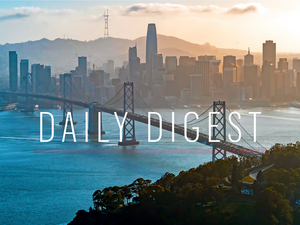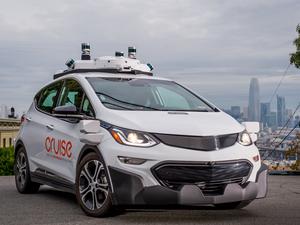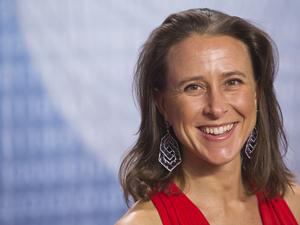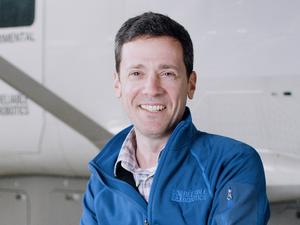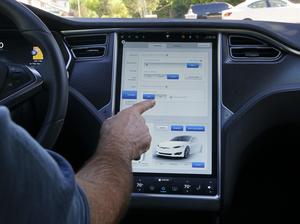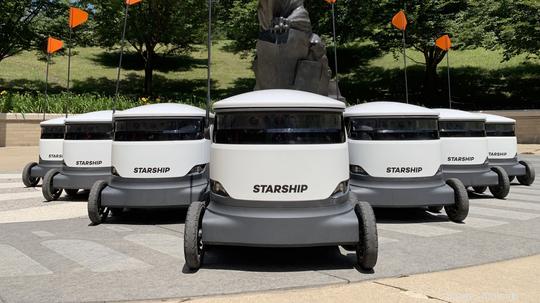
Would you order groceries from an autonomous robot? Starship thinks so.
The San Francisco startup has raised nearly $100 million over two separate rounds since the beginning of the year and launched delivery in Pleasanton in February through a partnership with Lucky California supermarket.
On Tuesday, the company announced a $42 million Series B round led by NordicNinja and Taavet+Stenn. TDK Ventures and Goodyear also participated. The raise comes about a month after the company announced a $57 million quasi-equity deal from the European Investment Bank that also included some debt.
The company currently offers deliveries at 33 sites around the world — mostly college campuses, industrial parks and in suburban areas with more controlled environments. It launched its first grocery delivery at a Save Mart store in 2020 in Modesto.
“We have more of a donut strategy,” CEO Alastair Westgarth said, explaining the company eventually expects to make its way into more densely populated commercial districts but, for now, 80% to 90% of the addressable market is outside of those urban zones.
Starship charges delivery and service fees that it often splits with its service partners, the details of which varies by market and partnership. In Pleasanton, that means customers pay $2 to $3 per order from Lucky.
“We never just sort of show up and turn the thing on, because we want to be there for a long term,” he said said. “We want to be good partners to the users, to the merchants and the community at large.”
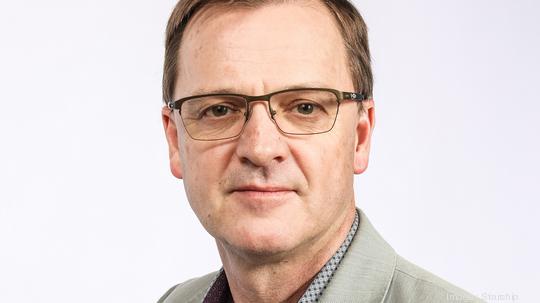
Founded in 2014 by Janus Friis and CTO Ahti Heinla, Starship has now raised $202 million in total funding. It was valued at $110 million after its Series A in 2019, according to PitchBook.
Westgarth became CEO at Starship last July. Before that, Westgarth was the CEO of Loon, the autonomous satellite internet project under Google's X division, for five years. In early 2021, Google announced that Loon was shutting down because the roadmap to commercial viability was too complex.
“One of the things I thought was amazing about Starship is they figured out how to take this AI/ML driven thing that was an autonomous vehicle and actually get it into commercial operation at scale faster than anybody else had done it,” Westgarth said.
The industry faces challenges beyond commercial viability, though. Automating daily tasks that humans have typically controlled opens up questions about safety and labor issues.
Car manufacturers and regulators will have to ensure that the general public trusts fully autonomous vehicles with life and death situations, while burger flipping robots trigger concerns about job losses.
Starship takes both issues seriously, Westgarth told me. All employees are paid above minimum wage, and the delivery robots are designed for safety and can self monitor themselves.
Its robots can safely navigate curbs and roads, even seven-lane intersections, but if a robot encounters an unfamiliar situation, it will alert its home base so a human can assess and correct the issue.
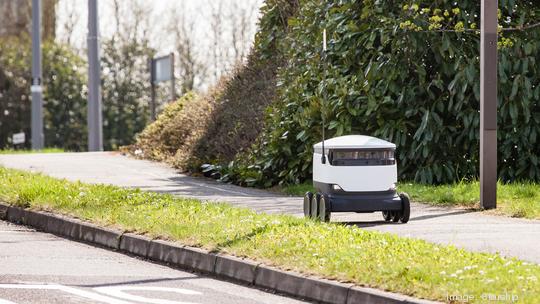
Starship's 1,700 robots operate at level 4 autonomy, similar to autonomous cars operated by Waymo and Cruise. Tesla’s “Auto Pilot” runs at a level 2.
Level 4 vehicles are considered highly automated. They can perform all automated tasks without humans intervening within specific environments or under certain conditions. It’s just one step away from what the industry generally accepts as fully autonomous operation, or level 5.
Starship’s vehicles can run for 18 hours on a single charge and can recall themselves back to a hub before running out of juice. They can also operate in most environments and weather conditions.
The company suspended deliveries for about two hours near London during an extreme wind storm in late February. Making deliveries wasn’t a problem, but as soon as a customer opened the lid, the force of the wind pushed the robots around like a sailboat.
Each robot can carry four grocery bags-worth food and the company currently isn’t developing a bigger vehicle.
“A very large robot could potentially be disconcerting. If it’s on the road, that’s one thing, but if it’s on the road it’s very difficult for it to get right up to your doorstep to do delivery,” Westgarth said. “On a sidewalk, the robots are only the width of your shoulders. We don’t want to take more space up than a human being walking down the road.”
